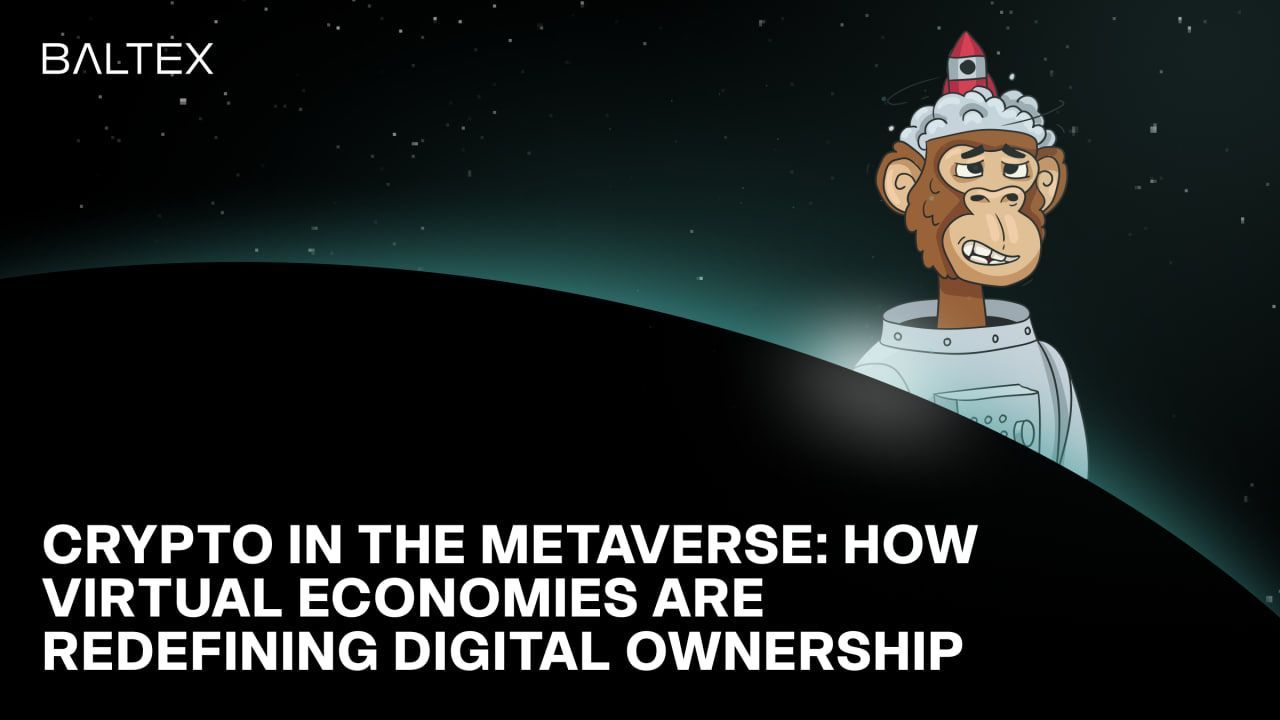
In 2025, the NFT and metaverse buzz isn’t gone—it’s just quieter, smarter, and more focused. While public hype has cooled and many early projects collapsed, a core community continues to build real-world use cases for digital ownership, virtual economies, and tokenized identity. This article breaks down where we are today, what’s next, and how platforms like BaltEX are helping shape the privacy-first infrastructure of the crypto metaverse economy.
This isn’t just about NFTs and avatars—it’s about the future of blockchain, DeFi, digital privacy, and user-controlled economies.
In 2021, NFTs exploded. People spent millions on digital art, avatars, and virtual land. By 2023, most of that hype had faded. Inactive projects piled up. Headlines declared the trend dead. Rug pulls, wash trading, and scams soured the space.
But in 2025, NFTs haven’t disappeared—they’ve matured. They’ve moved beyond collectibles into utility-based applications with real-world value. Now they’re used in video games, digital fashion, virtual identity, logistics, and even real estate. NFTs are programmable assets. They’re tools for ownership, access, and identity in the online world.
Game studios are integrating NFTs to give players real control over characters and items. Gamers can trade rare loot, rent in-game assets, or earn crypto rewards. Luxury brands are using NFTs as digital certificates for their physical products, helping eliminate counterfeits. In education, NFT credentials let learners prove course completion and professional certifications on-chain. In real estate, NFTs enable fractional investment in property and faster, verifiable ownership transfers.
NFTs now underpin access to exclusive events, early product launches, and decentralized autonomous organizations (DAOs). The speculative image is fading. The real question is, what can NFTs do—not what are they worth?
The metaverse was once pitched as the next version of the internet. A persistent virtual world where people live, work, and play. In 2025, that vision is evolving into something more practical and modular.
Big tech firms like Meta shifted focus to AI, but decentralized metaverse projects like The Sandbox, Decentraland, and Spatial keep pushing forward. These platforms are building immersive spaces for gaming, social events, virtual offices, fan engagement, and community hubs.
Brands are still experimenting with metaverse storefronts, virtual wearables, and fan tokens. Universities host virtual lectures. Artists perform in digital concert venues. Meanwhile, digital land is cheaper and more accessible. Builders are coming in to shape these worlds from the ground up.
The metaverse isn’t just one big world—it’s a network of interactive 3D environments, connected by NFTs, wallets, and smart contracts. Web3 infrastructure powers digital economies inside these spaces, with on-chain payments, tokenized access, and self-sovereign identity.
NFTs are now a core part of the Web3 stack. They’re tightly integrated with decentralized finance (DeFi), DAOs, and decentralized identity. This mix powers a circular economy that enables true ownership, interoperability, and programmable value.
The rise of soulbound tokens (SBTs)—non-transferable NFTs for identity and achievements—adds another layer. They’re being used for resumes, credentials, and trusted reputation systems across Web3 platforms.
This integration creates a feedback loop: earn assets in a game, use them to vote in a DAO, stake them for yield, or unlock real-world perks—all without ever leaving your wallet. This is the digital economy in action.
As the crypto ecosystem grows, so do privacy risks. On-chain data is public by default, and high-value wallets often become targets. This is where BaltEX steps in, offering a privacy-first crypto exchange platform that supports seamless, anonymous, and secure asset swaps across blockchains.
Whether you’re flipping NFTs, collecting GameFi rewards, or operating a DAO treasury, BaltEX provides the infrastructure to do it safely and privately. In a world where identity leaks can lead to hacks or doxxing, privacy tools aren’t a luxury—they’re essential.
BaltEX is part of a new wave of decentralized platforms that put users first—no tracking, no freezing, no middlemen.
In 2021–2022, regulators scrambled to understand NFTs and DeFi. By 2025, the rules are clearer. The SEC has cracked down on projects that sell NFTs like securities. The EU’s MiCA framework outlines requirements for large-scale NFT drops and asset tokenization.
Tax laws now treat NFTs as digital property. KYC is enforced on many marketplaces. Rug pulls and wash trading are under surveillance. While this slows some growth, it helps legitimize the industry and attract institutional capital.
NFT platforms are adapting. Many use smart contract-based royalty enforcement. Tools now detect fake collections and alert buyers in real time. Compliance meets creativity. Web3 platforms are learning to operate within clearer rules—without sacrificing decentralization.
NFTs and the metaverse are part of a larger crypto shift. In 2025, the blockchain landscape is more mature:
Web3 is becoming the internet's financial layer. It’s a user-owned network, where NFTs are digital keys, tokens are currency, and wallets are passports.
BaltEX fits into this shift as a backbone for private, cross-chain swaps. It connects ecosystems. It protects users. It eliminates friction.
NFTs and the metaverse are not dead. They’re being rebuilt. Not for hype, but for real use. The audience is different now—more builders, fewer speculators. The tools are better. The foundations are stronger.
Digital ownership, verifiable identity, immersive virtual spaces—these aren’t passing fads. They’re the next generation of online interaction. And companies like BaltEX are making that future private, secure, and interoperable.
2025 may not feel like a bull run. But it may be the year everything solidified. If 2021 was the bubble, 2025 is the foundation. And from here, Web3 is just getting started.
Keywords: NFT 2025, metaverse trends, Web3 gaming, GameFi, crypto economy, crypto infrastructure, private crypto exchange, BaltEX NFT platform, blockchain privacy tools, soulbound tokens, crypto swap platform, no-KYC crypto exchange, decentralized identity, cross-chain swaps, digital wallet security, tokenized real estate, fractional NFTs, secure DeFi, NFT lending, crypto privacy, NFT authentication, NFT DeFi integration, metaverse crypto tokens, on-chain privacy, zero-knowledge proof crypto, BaltEX Trust Layer, blockchain future 2025.